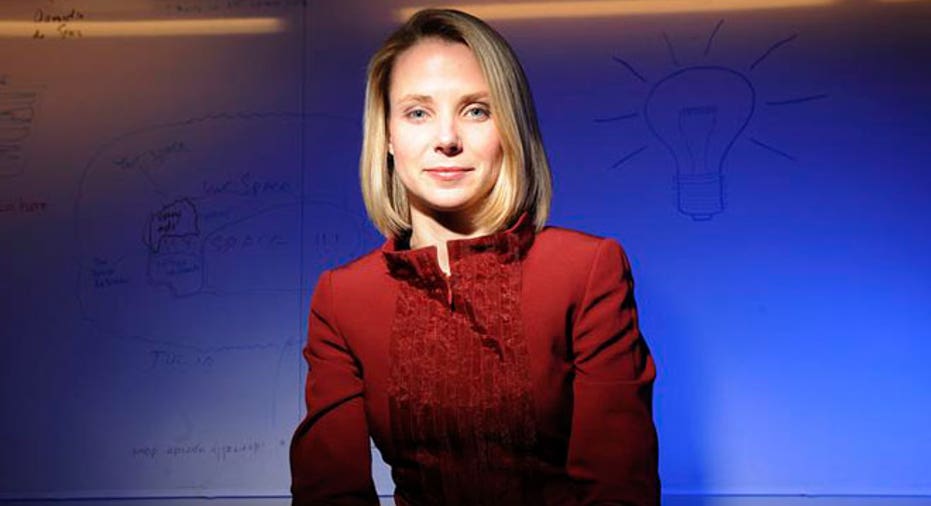5 Things to Consider From Yahoo!'s Marissa Mayer Memo

Enough with the debate over Yahoo!’s virtual work ban.
Quite frankly, any leader who sounds off about the need for more and BETTER communication and collaboration ranks top in my mind. Most leader agendas are void of either topic for regular review and discussion.
Yahoo! CEO Marissa Mayer took inventory of her company’s culture and work practices – and decided that change was needed. Big change. Guided by metrics and hard data, Mayer called for a new way of working.
“To become the absolute best place to work,” she recently announced in an all-employee correspondence, “communication and collaboration will be important, so we need to be working side-by-side. That is why it is critical that we are all present in our offices.”
Employees, start your engines and return to your cubicles!
That’s the new Yahoo! way, and it has received heavy criticism since garnering headlines last week. I applaud Ms. Mayer for assessing a critical productivity driver – workforce interaction – and defining a new direction with one clear, common goal: “to be one Yahoo!.”
What’s wrong with that?
Working the issues of interaction and innovation in all kinds and sizes of organizations, I’ve seen big sinkholes when it comes to having disciplined practices and timely data. Leaders wind up running a business with an incomplete operational dashboard.
The time may be right for you – like Yahoo! – to take stock of the practices that drive two-way communication and cross-team collaboration—and their effectiveness. How productive are meetings? How open is dialogue? How quickly is feedback addressed? How do ideas surface and get activated?
These five steps will help you get started:
No. 1: Know what makes communication effective.
If your focus is on roll-outs, cascades and telling, then you’ve minimized the biggest factor that delivers the ultimate rewards of direct dialogues: feedback. Feedback requires cultural and channel adjustments that promote no fear in speaking up, receptivity to others and active listening.
Leaders should take stock of their listening time during face-to-face or phone conversations. What’s your level of inquiry? Do you regularly and comfortably use open-ended questions? Start with an honest evaluation of your own communication proficiency, then seek to understand and assess the level and quality of inquiry and interactivity within and between work groups and levels.
No 2: Understand the bottom-line value of communication and collaboration.
Face-time has its benefits. A widely publicized study on CEO behavior by the Harvard Business School shows a strong tie between leader engagement and business performance. According to results, CEOs who spent more time meeting with employees saw a big return on their effort – as much as a 2.14 % increase in employee productivity for every 1 % increase in hours worked.
“Time spent with insiders contributes to the firm’s output,” the study states. It appears that Yahoo! agrees.
No 3: Develop concrete metrics and measurement practices.
Ms. Mayer had a set of metrics to guide her decision on virtual work. Among them, she studied the employee parking lot and the number of empty spaces. She also looked at how employees were using the company’s internal network.
My firm develops hard metrics to evaluate the quality and level of worker engagement and interaction at a company. And we add them to operational dashboards to keep them prominent. The best metrics are outcome-driven rather than activity-based. They assess what employees’ know and how they share their knowledge in ways to support personal and team success, based on the overall goals of the company.
No 4: Conduct a comprehensive assessment.
Make this an inclusive effort, wide sweeping across levels and functional groups. Working with the COO of a fitness equipment manufacturer, my team and I developed an internal audit tool for evaluating customer delivery practices. The audit was completed by all employees—hourly and salaried—from the warehouse to the reception desk.
By answering a series of multiple choice and qualitative questions, employees evaluated cross-team and shift-to-shift communication practices that support the customer experience. They also gave improvement ideas for any aspect of service delivery, regardless if it pertained to their specific job responsibilities. We uncovered eye-opening data about specific leader and co-worker behaviors which turned off morale and collaboration. As it turned out, employees wanted fewer emails and more conversations, in person, with management and their colleagues in other departments. Shades of Yahoo!
No 5: Face reality and move forward.
Use the data from any assessment rapidly and share it widely with those who contributed to it. Audit results from my client the fitness equipment manufacturer led to new communication practices that encouraged both formal and informal interactions. Large group meetings, team huddles and a few other exchange approaches were introduced with guidelines and support tools that kept them efficient and consistent. Over a six month period, communication effectiveness – as measured by the level of engagement of participants and the quality of information and ideas exchanged – increased. Employee knowledge of the total customer experience widened significantly as information and conversations increased about the challenges or accomplishments of sales, engineering and other departments.
Yahoo!’s assessment of its communication and collaboration performance is model behavior for all companies. Whether you like or don’t like the outcome of a work from home ban is irrelevant. That was right for Yahoo! as determined by its top leader. What’s right for your company? Let the right metrics, the right questions and the right assessment guide your answer.
Linda Dulye is internationally recognized for helping many companies go spectator free. A former communications leader for GE and Allied Signal, Linda established Dulye & Co. in 1998 with a practical, process-driven approach for improving communications and collaboration through an engaged workforce— a formidable competitive advantage, that she calls a Spectator-Free Workplace™.



















